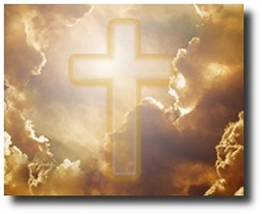Unless you’ve been living under a rock (which might not be a bad idea right now), you’ve probably heard of the James Webb Space Telescope. It’s the largest optical telescope in space and was named in honor of James E. Webb, the administrator of NASA from 1961 to 1968.
The James Webb Space Telescope (JWST) supersedes the famous Hubble Telescope, named after American astronomer Erwin Hubble. It was Hubble, in 1924, who discovered that there was more to the universe than just our Milky Way galaxy. That is, there were other galaxies outside ours. Prior to this, everything we observed was thought to be part of our own galaxy, and there was nothing beyond that. In other words, our galaxy was the entire universe.
The JWST is about 6 times larger than the Hubble Telescope, measuring about 21 feet in diameter. Its infrared technology allows it to “see” much clearer and much farther out than ever before. It has returned some truly awe-inspiring photos.
Interestingly, when the prophet Jeremiah looked up at the sky, he could see approximately 3,000 stars. A nice amount, but hardly “uncountable.” So why did he write they were uncountable?)
“As the host of heaven cannot be numbered, neither the sand of the sea measured: so will I multiply the seed of David my servant…” Jeremiah 33:22
Perhaps God inspired him to do so. And by “perhaps,” I mean “definitely!” Today, astronomers tell us there are about 10 trillion trillion stars! That’s uncountable, just like Jeremiah said, even though he could only see a relatively small number.
Astronomers have wondered about the universe. Is it pretty much the same everywhere we look, or are there areas that are virtually empty and others that are full of stars and galaxies? The Hubble Telescope was used to focus on a small spec of space, equivalent to about one 24 millionth of the entire sky. That area initially looked fairly dark. What developed (called the Hubble Deep Field) revealed 3,000 galaxies, each of which probably contains 100 billion stars! Then it was focused on a spot one 32 millionth of the sky. What developed there (known as the Hubble Extreme Deep Field) revealed 5,500 galaxies! And finally, we have the Hubble Legacy Field, which revealed 265,000 galaxies! Absolutely amazing! But you didn’t come here to read about the Hubble Telescope.
Most secular astronomers, and some Christian astronomers, believe in the Big Bang. (I personally do not think the Big Bang is a scientifically valid or biblically compatible theory, but space does not permit sharing those details here.) The further astronomers look out into space, the closer they believe they are to seeing what happened shortly after the Big Bang, which they posit occurred 13.8 billion years ago. They have long believed that galaxies would take 3-6 billion years to fully form. They allegedly progress from an irregular shape to a disk shape to an elliptical shape.
Enter the conundrum! The James Webb Space Telescope purportedly was able to see all the way back to just 230 million years after the initial Big Bang. What did they find? First, let’s mention what they should have found if the Big Bang is true. They should discover lots of gases and maybe some irregular galaxies. What did they actually find? Fully formed, mature galaxies! That means they supposedly formed in just 8% of the time they were expecting.
Shocking headlines filled the print and online media:
“How the James Webb Space Telescope Broke the Universe”
“James Webb Space Telescope Shows Big Bang Didn’t Happen?”
What impression do you get from headlines like these? Probably the feeling that astronomers are abandoning the Big Bang, right? Nothing could be further from the truth. However, if the headline stated further evidence was discovered for the Big Bang, you might think, “Yawn, yawn,” and not bother to read the article. It’s much more sensational to let the reader think something extremely Earth-shattering has occurred.
The Big Bang is a belief to which everything else must conform. When you discover something that doesn’t fit, you generally redefine the Big Bang model to fit with the new data. (By the way, there are actually multiple versions of the Big Bang.) What’s even more brazen is they will often then turn around and claim that the new data is further proof of the Big Bang! How convenient, and how unscientific!
This “forcing the evidence to fit a narrative” is similar to when they discovered soft tissue and red blood cells in dinosaur bones. They initially rejected the evidence, until it was so clear that they could no longer deny its existence. Then, instead of considering the more logical conclusion (i.e., that these dinosaur bones are not as old as they presumed), they said that there must be some unknown entity preserving these delicate substances for 65+ million years!
As another example of how the narrative must be preserved at all costs, we could consider an even more fundamental question regarding the origin of the universe. Where did it come from? The Big Bang involves something expanding and creating space and time as it did so. That leaves every thinking person with a very logical question. Where did the “stuff” that expanded come from? If you say it came from something else, you’d have to explain where that something came from. That doesn’t help the secular scientist. If you say it came from nothing, who’s going to take you seriously? That certainly doesn’t seem, and isn’t, very scientific. Nevertheless, many scientists have settled on the universe coming from nothing. One of the leading theoretical physicists, Lawrence Krauss, had a convenient way around this seeming odd belief–that everything came from nothing. He just decided that “nothing” is actually filled with stuff; it’s not void of everything! That is crazy and is far from being scientific. It also leaves you with the same problem. Where did all the “stuff” inside “nothing” come from?
As I’ve said many times, we are really dealing with a heart issue and not an academic debate. The evidence is crystal clear and is on our side. The secular skeptic often doesn’t need more “facts” thrown at them; they need a different “starting point” to properly interpret the facts they already know. Hey, that sounds like a great name for a ministry… The Starting Point Project! 😊









